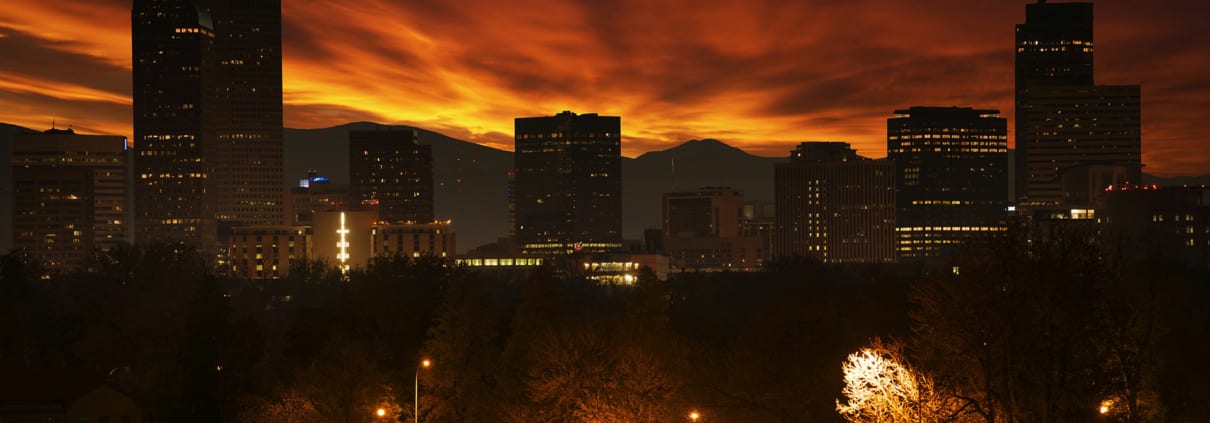Recently move to the Front Range?
Here are 5 tips for homeowners that are new to Colorado’s beautiful Front Range.
1) Hail is coming. Update your home and auto insurance if you need to. Park the cars in the garage. Keep the pets inside….etc. Do what you have to do, but the hail is definitely coming. Several areas along the Front Range are considered “Hail Alley”. Denver, Aurora and Colorado Springs are among the Top Ten most hail prone cities in the US. Start off with a thorough roof inspection, and have it checked out as often as needed throughout the year. A good rule of thumb is to inspect each year in the spring, and after any hail storms in your area. Most roofers do this for free or a minimal charge. When replacing existing shingles, ask your roofer about upgrading to a Class 4 shingle. The extra protection that class of shingle offers may better the best choice, and may lower your insurance.
2) It’s dry here. Contrary to popular belief the Front Range of Colorado is very dry, especially during the Winter months. Home humidity levels can easily drop to under 20% during the heating season and that can effect not only the comfort of your home, but individual health issues as well. Even wood furniture and cupboards can be negatively affected by low home humidity levels. Consider a running a humidifier near your bed when you sleep. Also, it is quite common in Colorado to install a “Whole Home” humidifier onto your forced air furnace. They usually cost a few hundred dollars, humidify the entire house and they do not require a lot a maintenance. Contact a qualified HVAC pro to look for options.
3) The sun. It matters. How would you like to never again have to shovel your driveway in the Winter? Do you like shade on the back patio or do you want to bake in the summer UV rays? The way your home is situated relative to the sun really does matter here. Year round, the sunlight is intense, much more intense than most other places in the US. Before you decide on a home, consider which direction the home faces and where the sun will be a various times of the year. You will notice North facing driveways are always full of snow and icy, while their neighbors across the street with South facing driveways are melted and clear by noon. In the summer, the back patio or deck may be too hot for activities in the afternoons, so folks will opt to hang out in the front of the house or garage where there will be more shade. Also, do not forget the building materials; Buy the UV protected paint for the house, Consider window treatments etc. You’ll even need to adjust your sprinkler heads in the lawn to account for direct sun. Trust me, the sun matters on the Front Range.
4) Expansive soil. An entire book could be written here, but I’ll give you the basics. There are certain types of soils in the ground in Colorado (actually clays, like bentonite) that can swell when they are exposed to ground water. They swell a lot actually. They swell so much that they can literally lift up the foundation of your house. So what does this mean for the typical homeowner? Keep water away from your foundation. Do yearly gutter maintenance, and check your home exterior, basement and crawl-spaces after any hard rains. This is important just about everywhere in the country, but the expansive soil here makes it even more important along the Front Range. Also, check with your local building department before your basement remodel begins. Many areas require a “Floating Wall” to be built to account for basement floor movement.
5) There is gas in your home. Radon Gas to be more specific. Radon is a colorless, odorless, naturally occurring yet highly dangerous gas that is very common in high concentrations in some soils. This gas can leak into your home through the basement or bottom floors and is actually the number 2 cause of lung cancer in the country. Sounds horrible you say? Well, it is very real and very dangerous, but it is also very easily mitigated. Most real estate transactions in Colorado will have a simple Radon test performed during escrow. Then, if necessary, a Radon Mitigation system can be installed on the home. These systems range from $500 to $2000 to install and require almost no maintenance. Your neighbor may need one, your home might not. You don’t know until you do a test. Get a test by asking your home inspector or real estate agent. Read more about Radon here.



Leave a Reply
Want to join the discussion?Feel free to contribute!